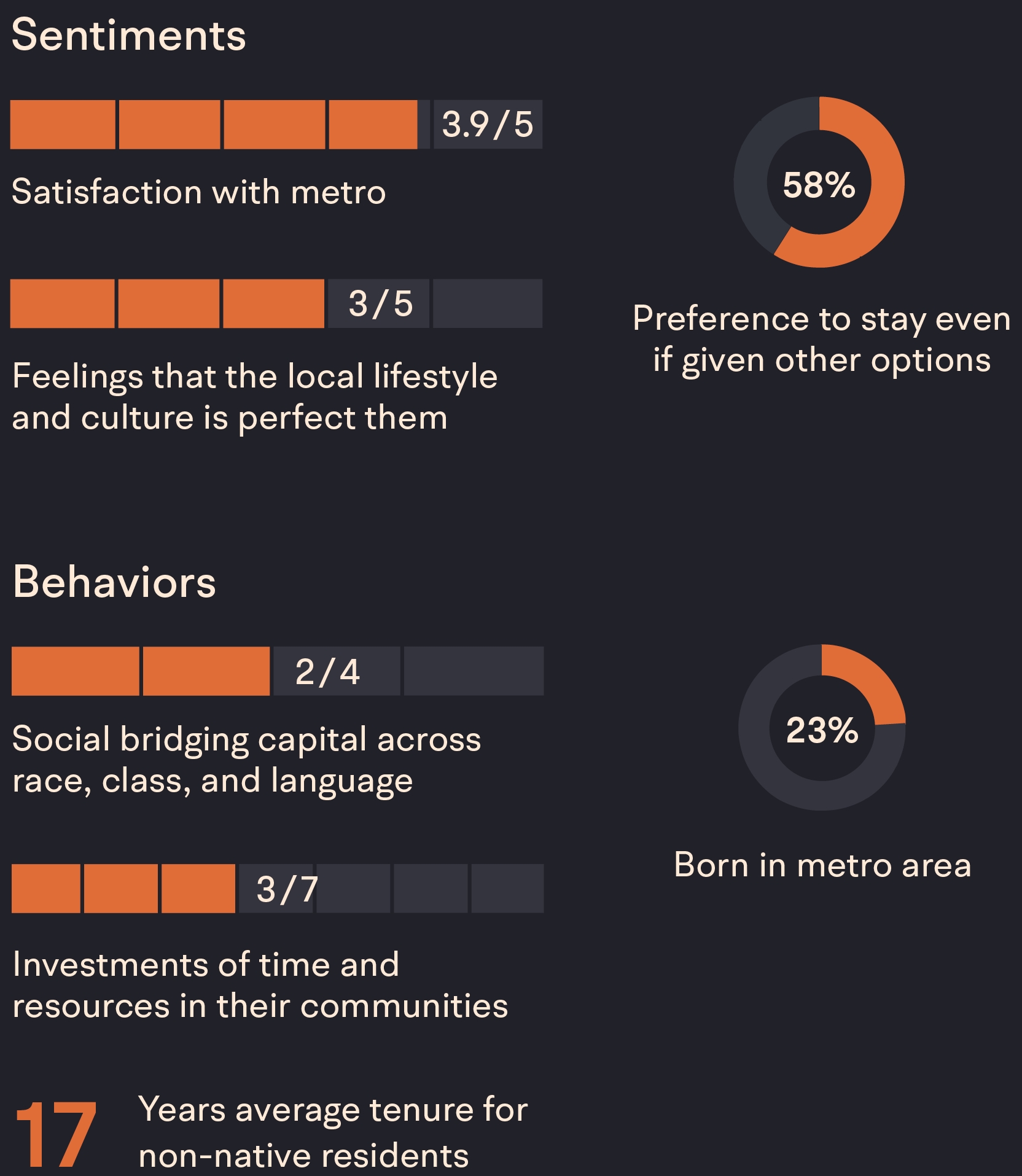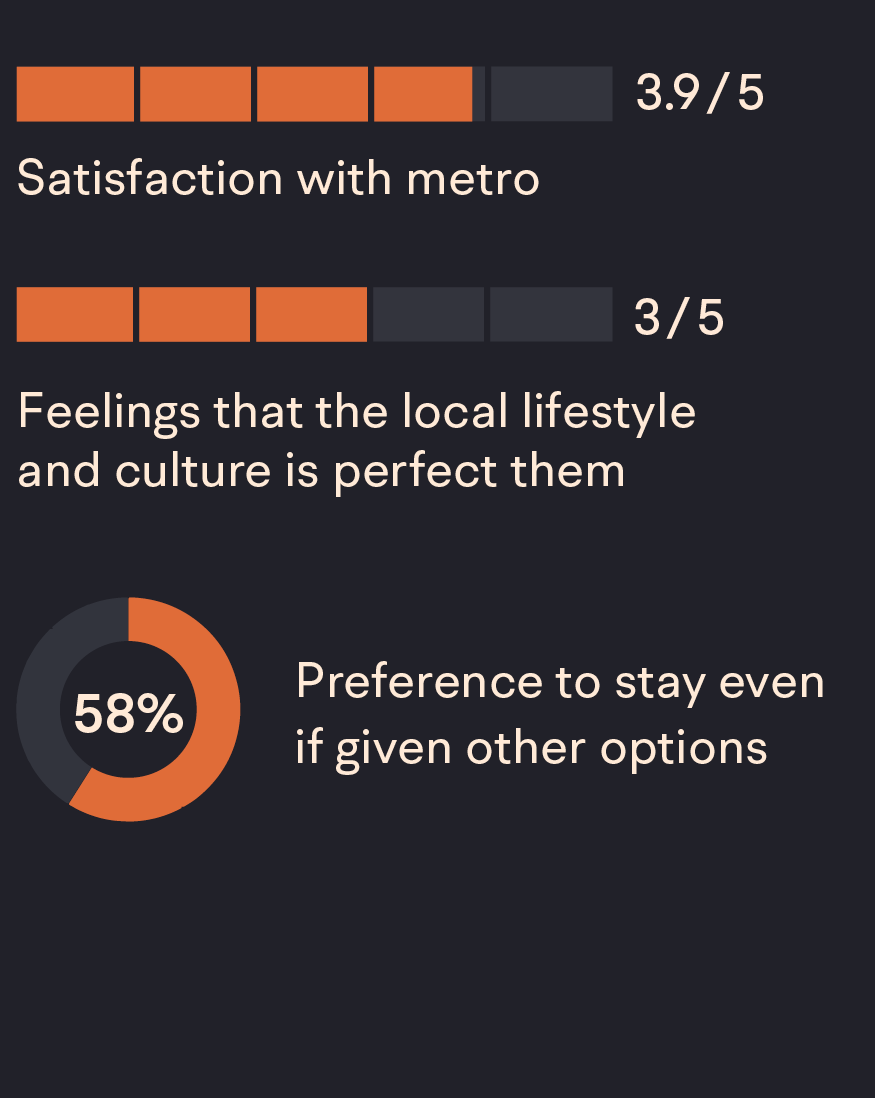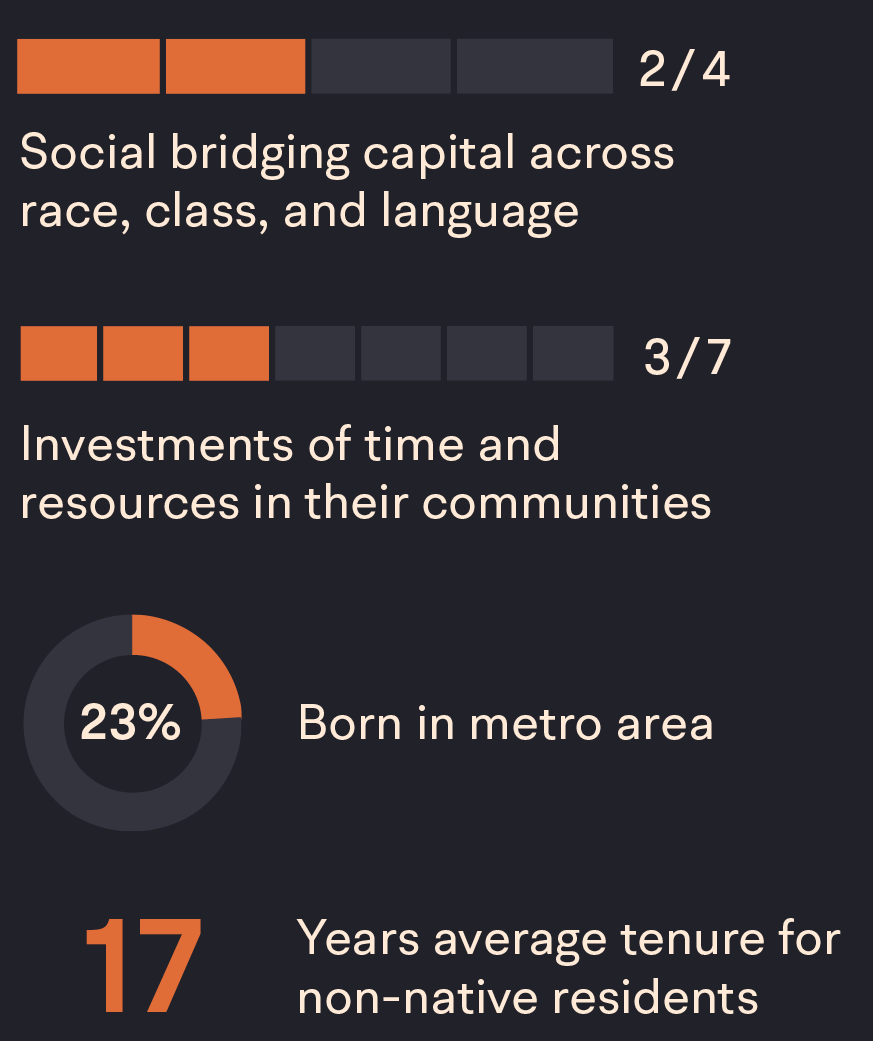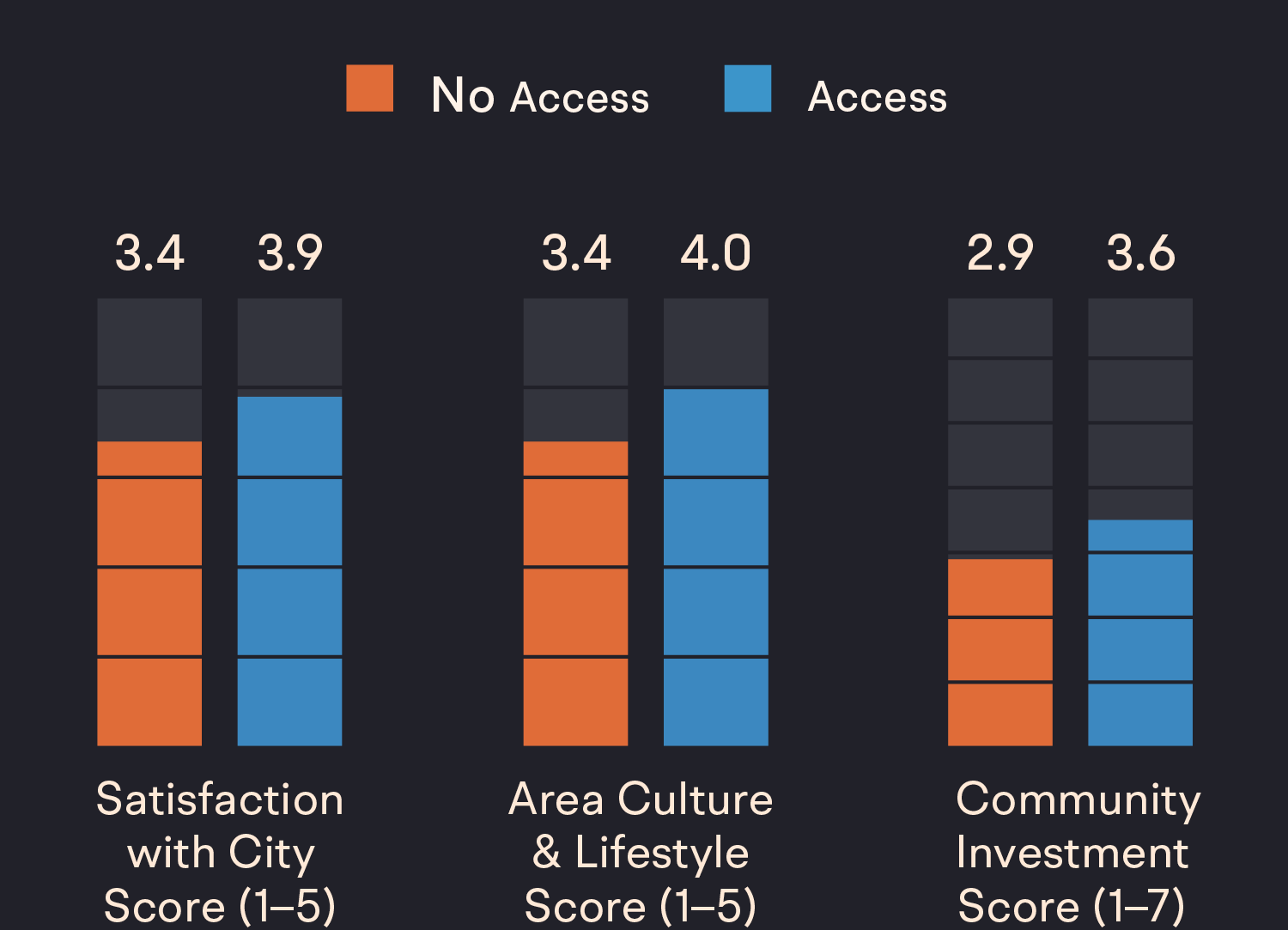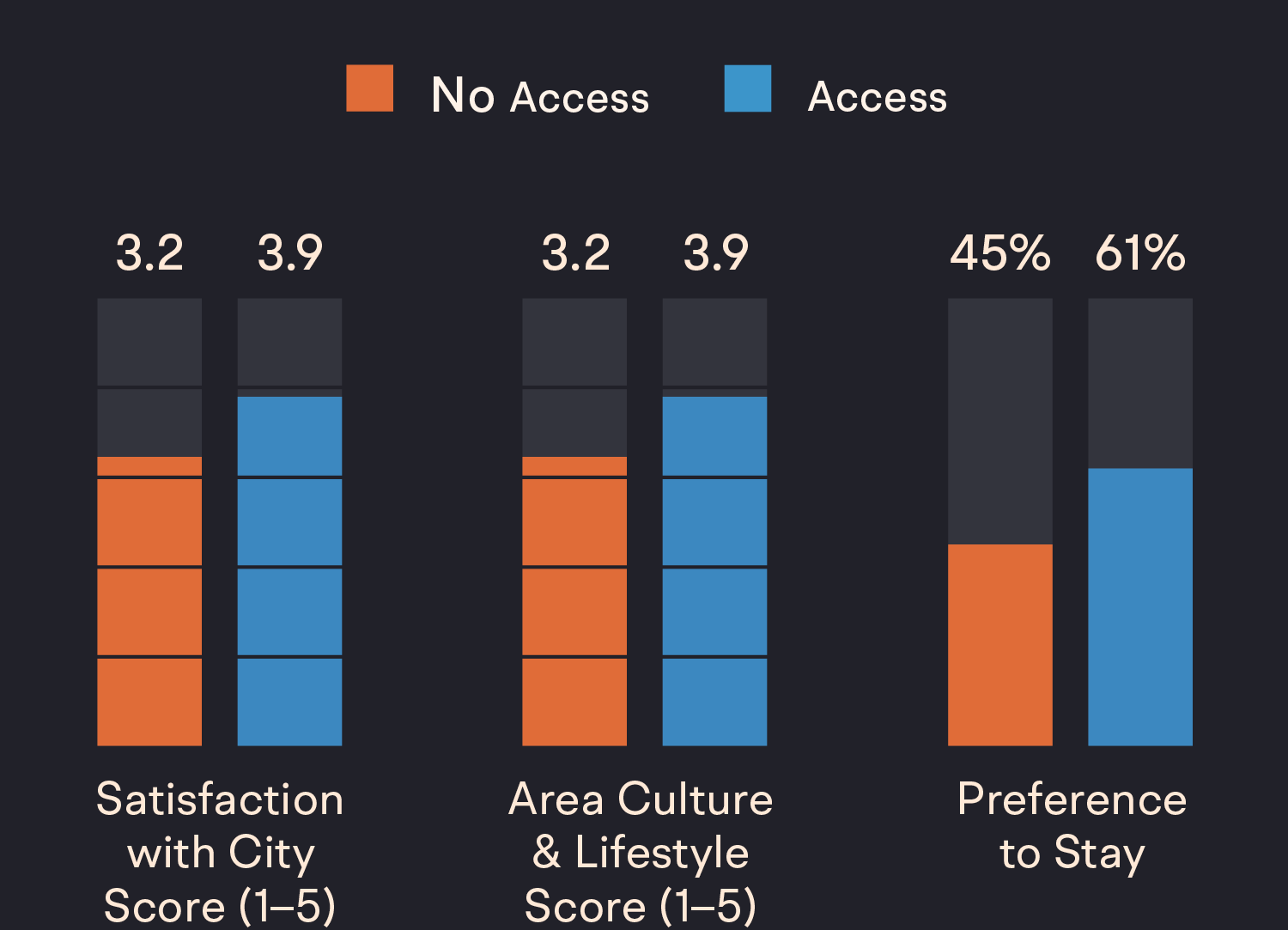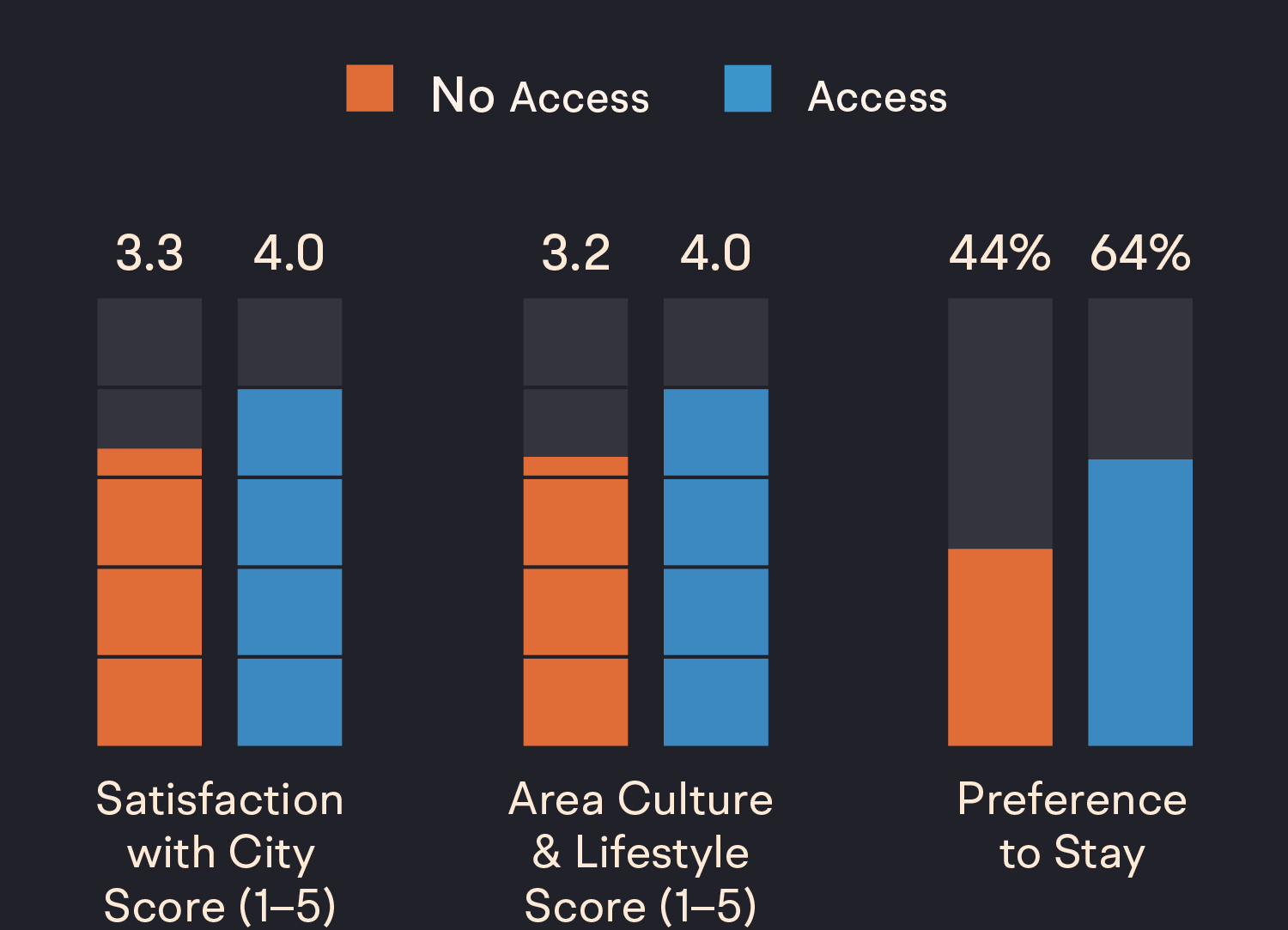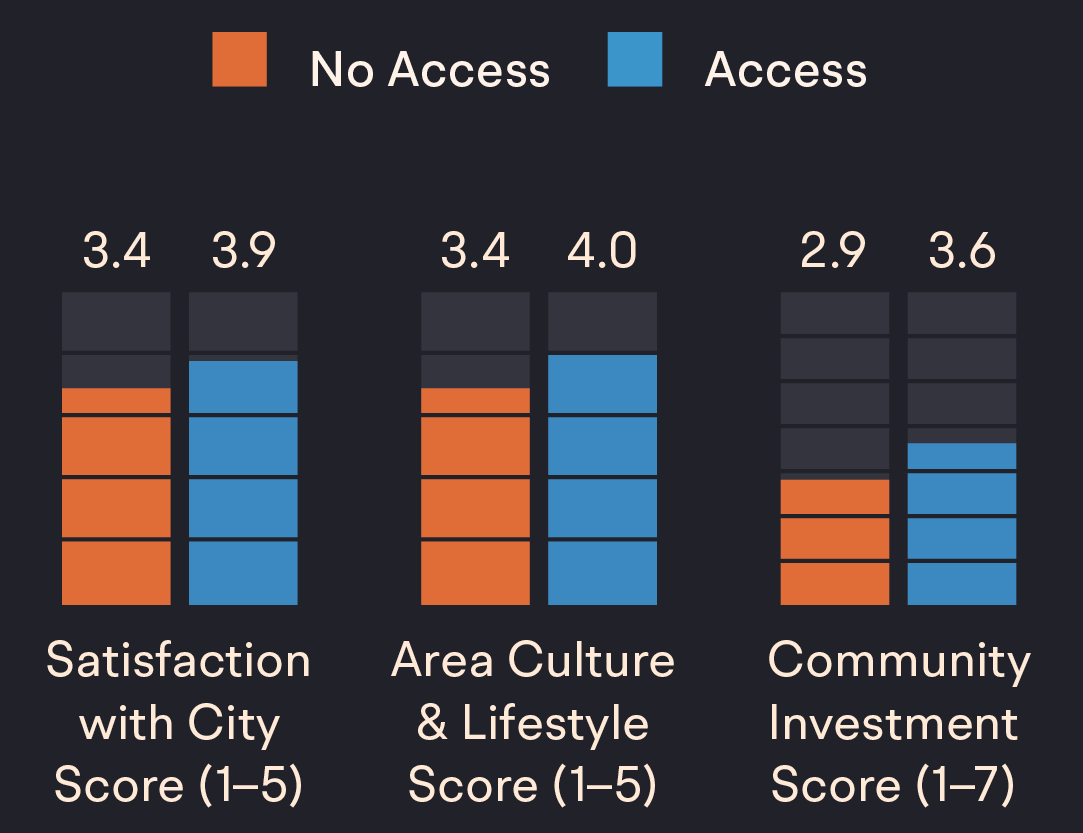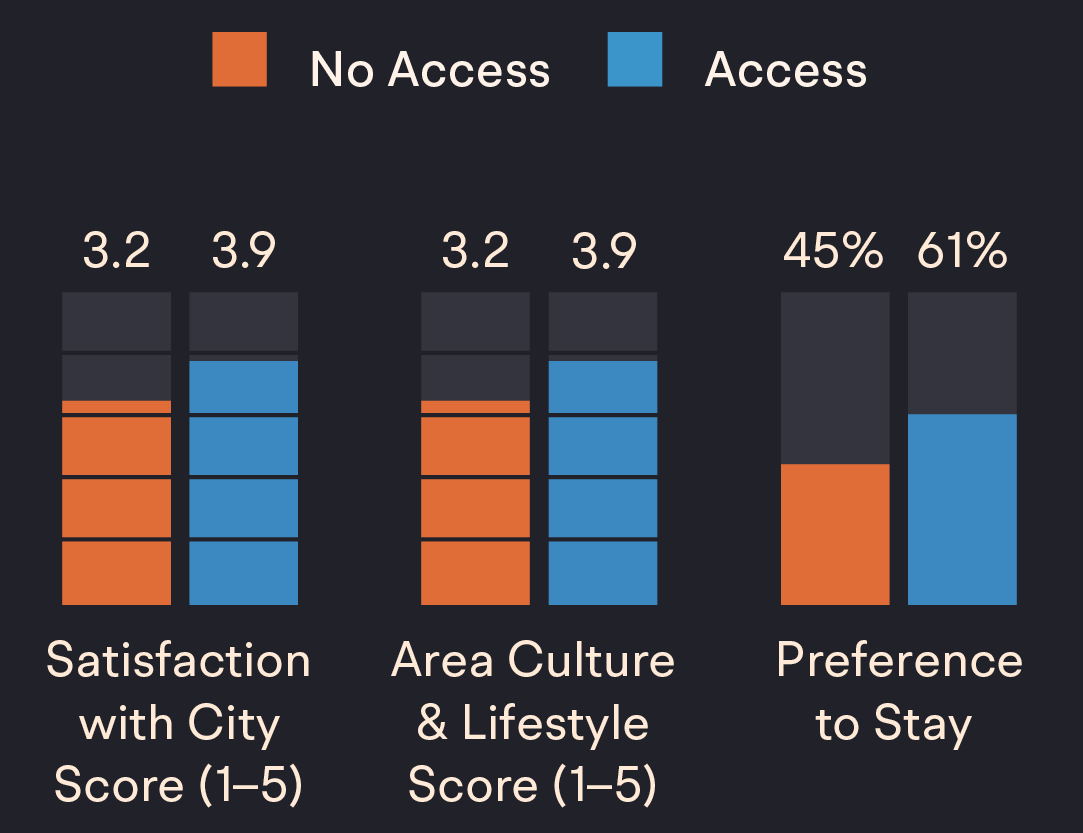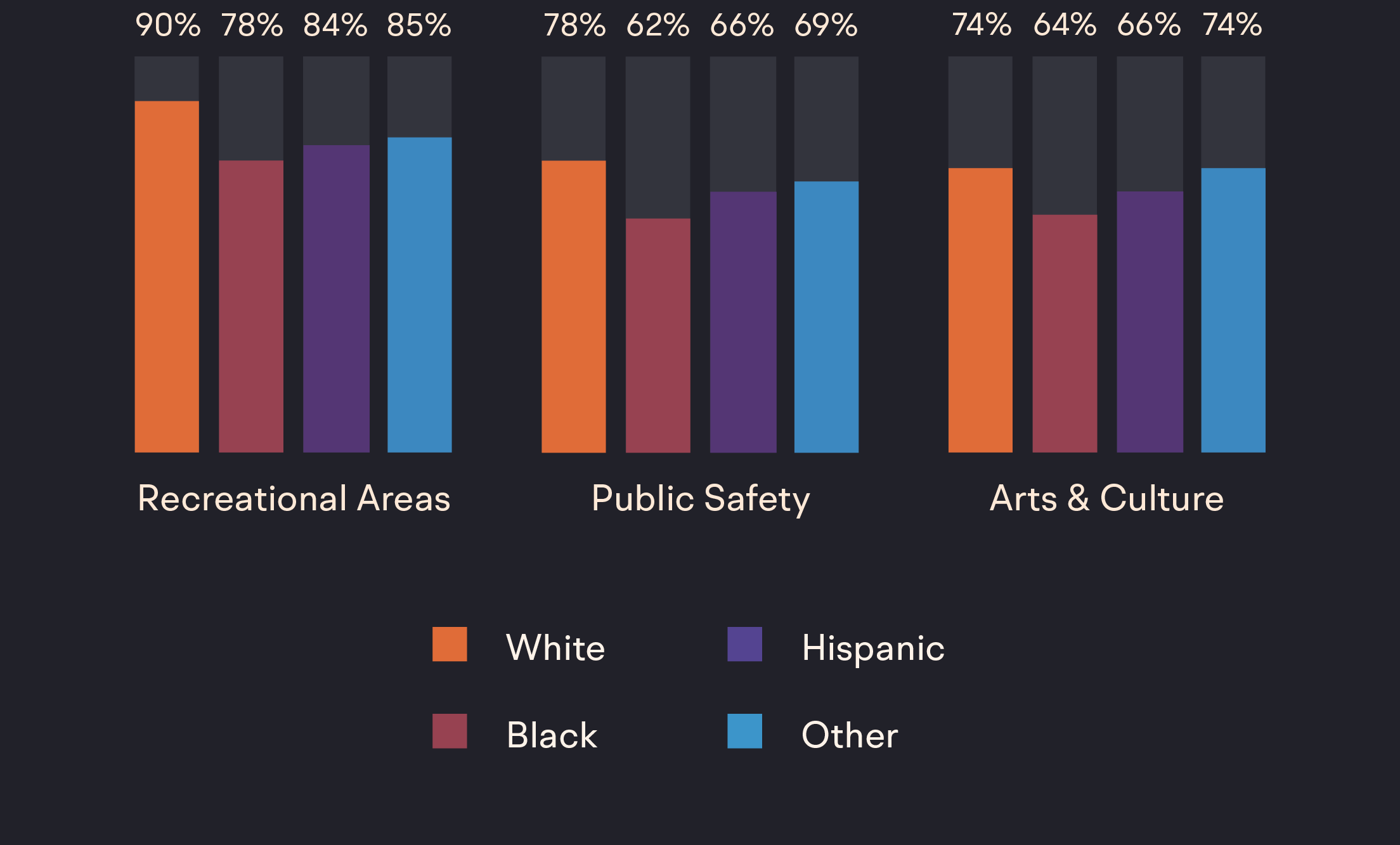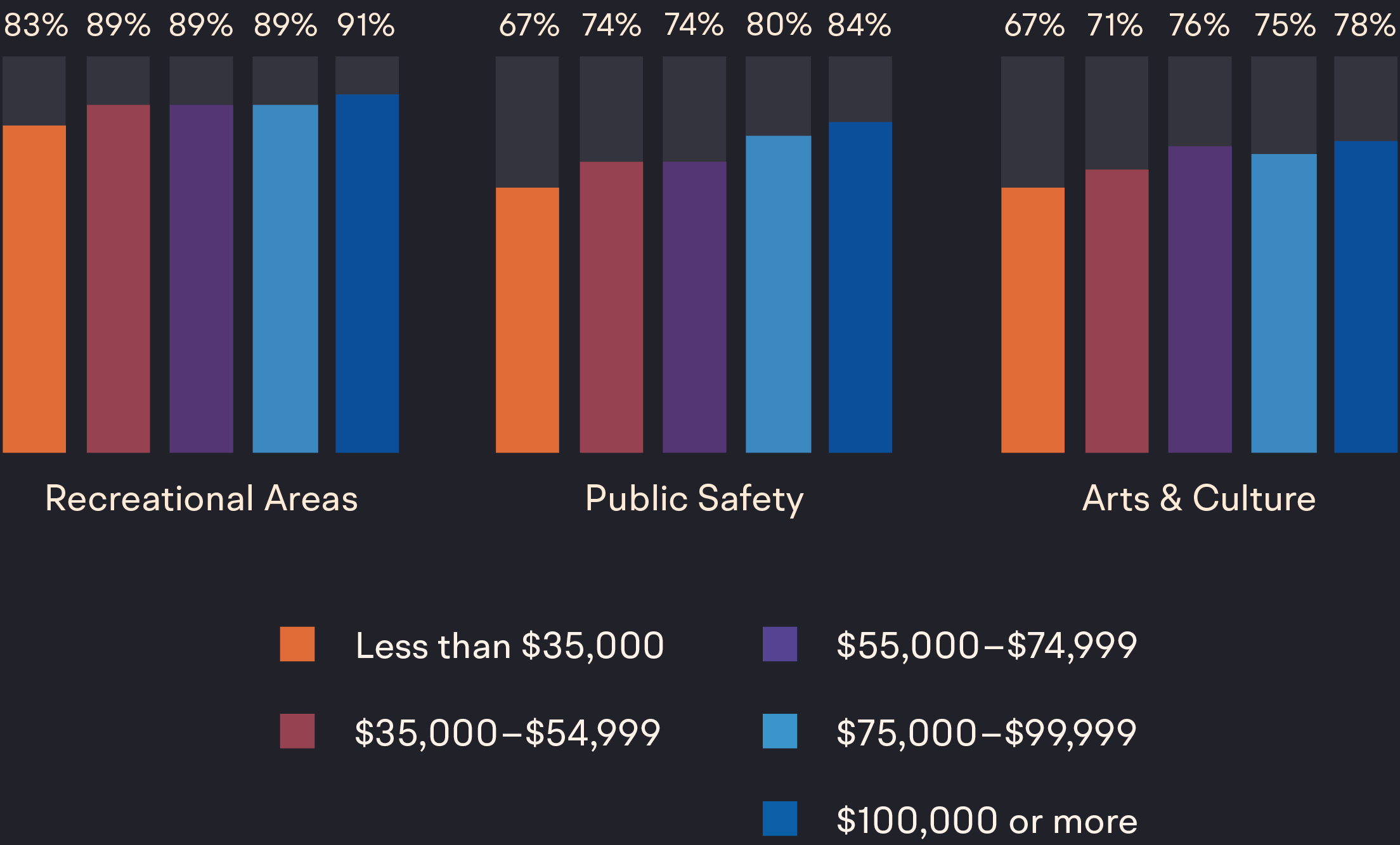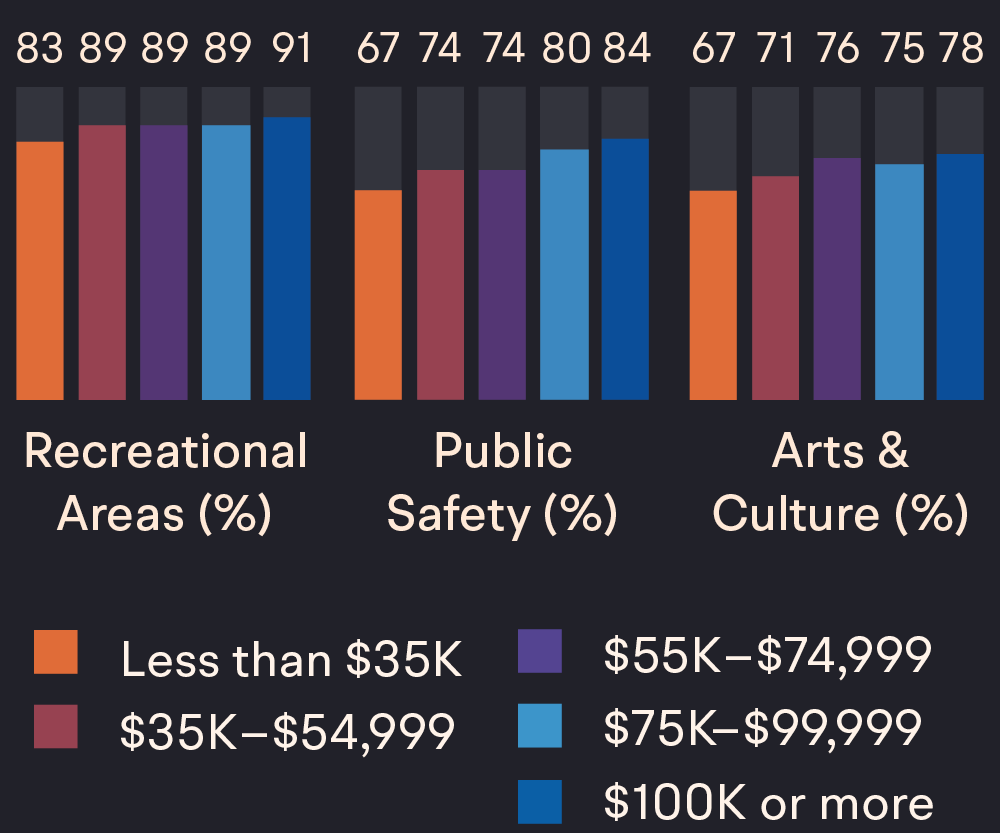How attached are Americans to their community?
The ties we have to our community start with sentiment—how people feel about where they live. These include metrics like satisfaction, fit with local culture and lifestyle, and a preference to stay. But people also demonstrate attachment to their community through their behavior. These include their level of community investment, social bridging capital (diversity within their network), and the choice to stay in the community over time.
Time spent in the city test
Of all variables, the amount of time people spend in the city center had the broadest significant effects on both attachment feelings and behaviors. Local initiatives that aim to bring more people from the suburbs downtown to participate in the life of the city could help boost both attachment sentiments and actions.
Access to quality of life amenities increases attachment
Access to certain community amenities increases attachment more than others. Residents with access to arts and cultural activities reported higher attachment to their community—both in feeling and behavior. Those with access to recreational areas and safe places to live, work and play also had more positive feelings about the community, compared with those who had access to jobs, affordable housing, schools or other desirable features.
Why people choose a community matters
People often move for family or job reasons, but those who report moving to or staying in a metro area for its quality of life tend to express stronger sentiments of attachment to community.
Access is not always equal
Quality of life matters more to low income people and people of color, but it is often harder to come by. These groups report lower access to key amenities, even though these amenities are more important to them than the average resident.
Implications for communities
Local community leaders and residents often struggle with how to make their cities and towns better places to live—places that attract and retain long-term residents. The task can be daunting, with competing priorities and limited resources. However, The Community Ties study offers some insights on strategies that might foster greater resident attachment to their community.

